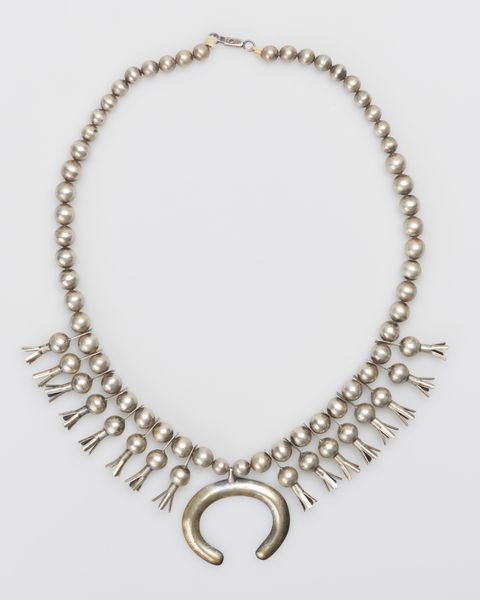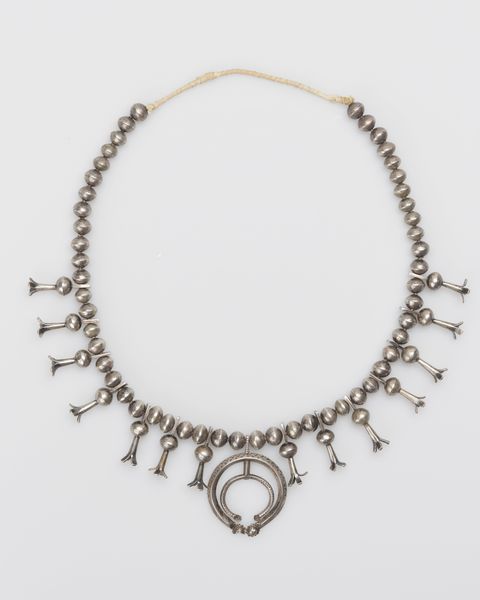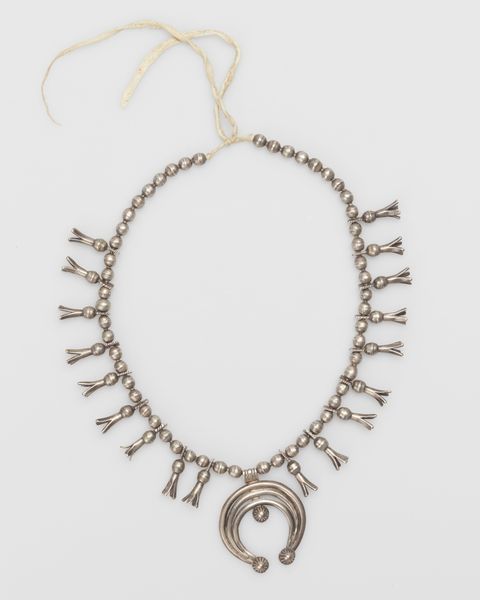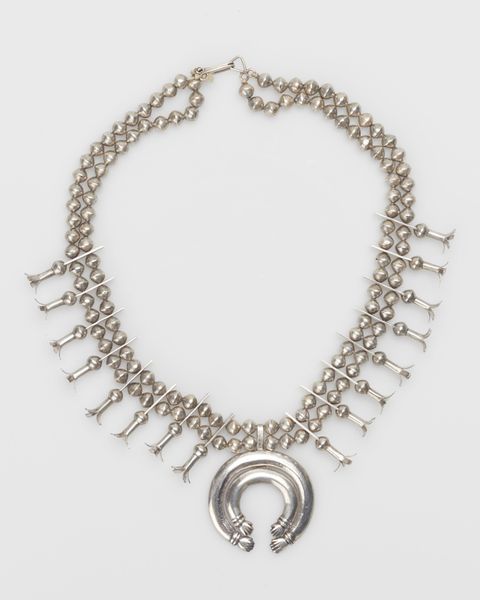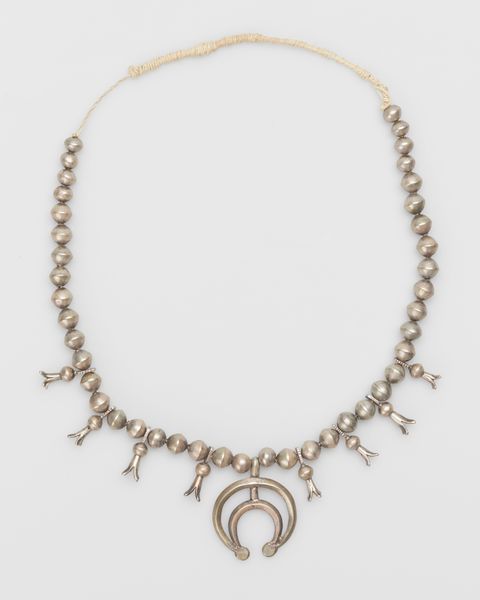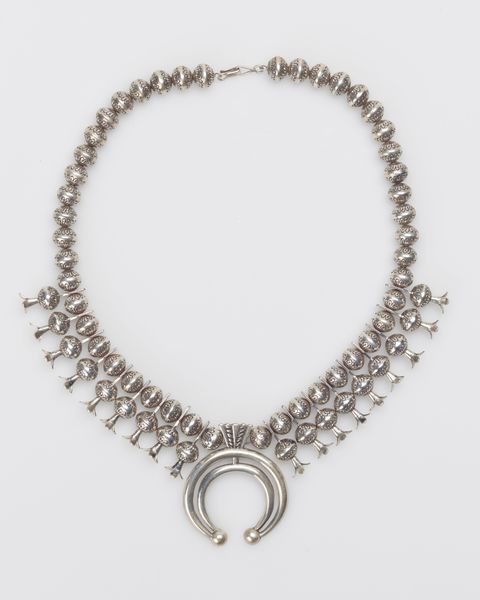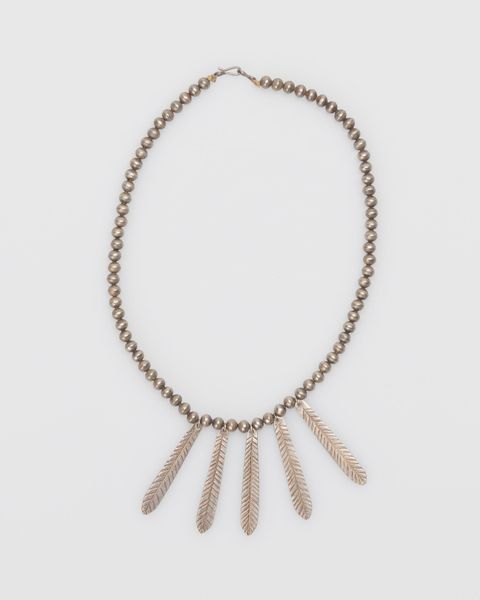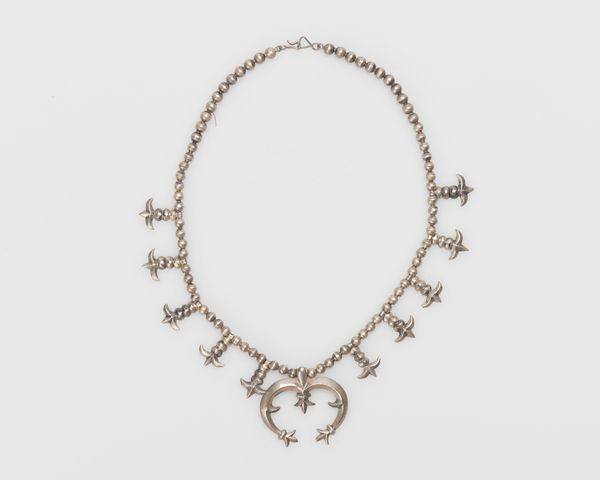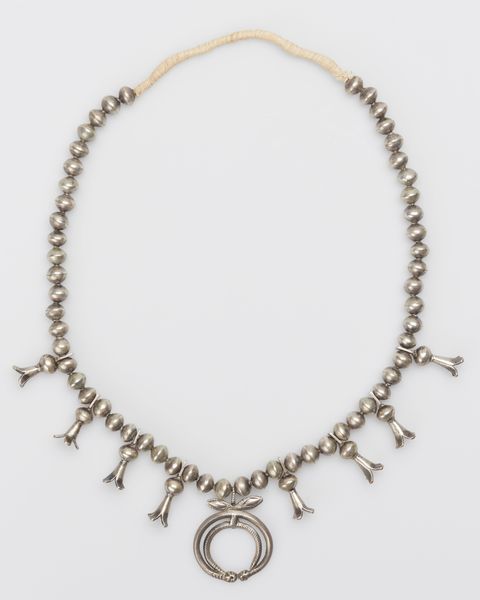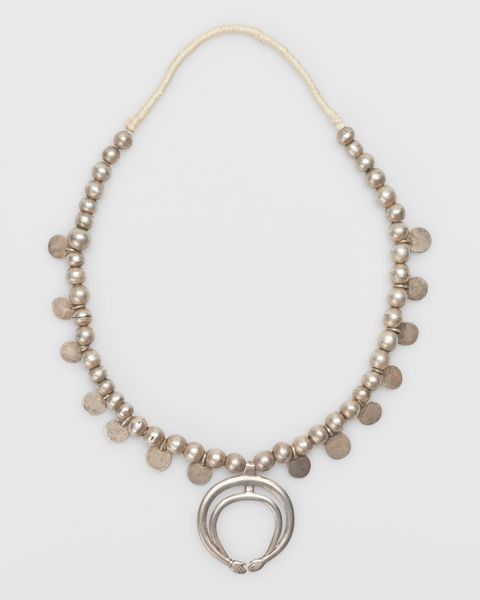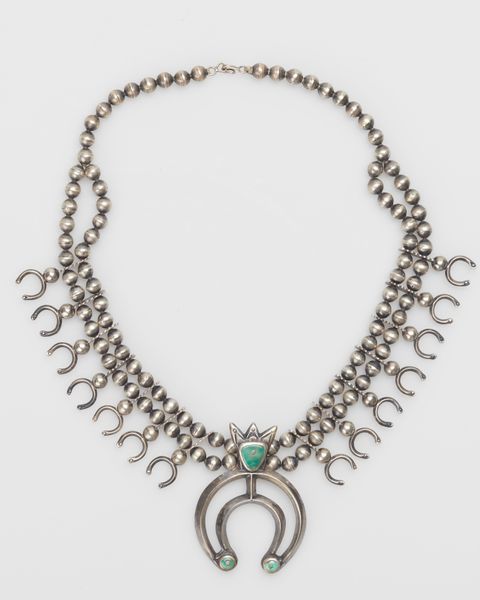
silver, metal
#
silver
#
metal
#
indigenous-americas
Copyright: Public Domain
Editor: This striking necklace, a Diné piece from around 1930, caught my eye at the Minneapolis Institute of Art. The silver and turquoise shimmer in the light, and the design, especially that central crescent, feels so evocative. How do you interpret a piece like this within its historical context? Curator: That crescent is called a Naja, a shape derived from Moorish and Spanish influence. Its presence, alongside the squash blossom beads, points to complex cultural interactions. Initially, the Navajo crafted these pieces for trade with other tribes, but they became increasingly popular among Anglo tourists, especially along the railway routes of the Southwest. Editor: So, it’s more than just adornment? Was there a tension between cultural expression and market demand? Curator: Absolutely. Museums like this one became key players in defining “authentic” Native art for the consumer market, sometimes freezing artistic traditions in time to meet romanticized expectations. This creates a complicated public role for art – on the one hand promoting, on the other hand shaping expression of indigenous heritage and history. What is particularly striking is the ongoing legacy today, where traditional Diné jewelry is collected worldwide as artwork. Editor: That's a really interesting perspective. I hadn't thought about the role of the art market so directly influencing what gets created. Curator: Exactly, considering how cultural exchange and economic factors impacted even a single necklace like this, can really reshape how we understand artistic expression and social change. Editor: I see it differently now. Thank you for that insightful exploration into how societal influences interact with artistic creations. Curator: Likewise. Reflecting on this interplay reminds us of the stories objects can tell and the conversations they can begin.
Comments
No comments
Be the first to comment and join the conversation on the ultimate creative platform.

